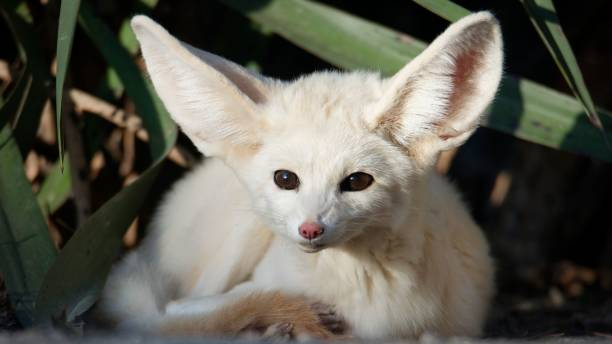Table of Contents
Scientific Classification
| Kingdom | Animalia |
| Phylum | Chordata |
| Class | Mammalia |
| Order | Carnivora |
| Family | Canidae |
| Genus | Vulpes |
| Species | V. zerda |
| Scientific Name | Vulpes zerda |
1. Description
The Fennec Fox (Vulpes zerda) may be small, but it’s bursting with charm and personality, making it a truly fascinating desert dweller.
Weighing in at just 1 to 3.5 pounds (0.45 to 1.6 kg) and measuring 9 to 16 inches (24 to 41 cm) long—excluding its fluffy tail—this little guy holds the title of the smallest canid on the planet. Its soft, sandy fur glistens in the sunlight during the day, while at night, it keeps cozy in the cooler desert air. This beautiful coat allows it to blend seamlessly into its arid surroundings.
Those large, dark eyes aren’t just adorable; they’re essential for this nocturnal hunter, helping it navigate the night and spot food beneath the moonlight. With a keen sense of smell and sensitive whiskers, the Fennec Fox is well-equipped to detect danger and hunt for its next meal.
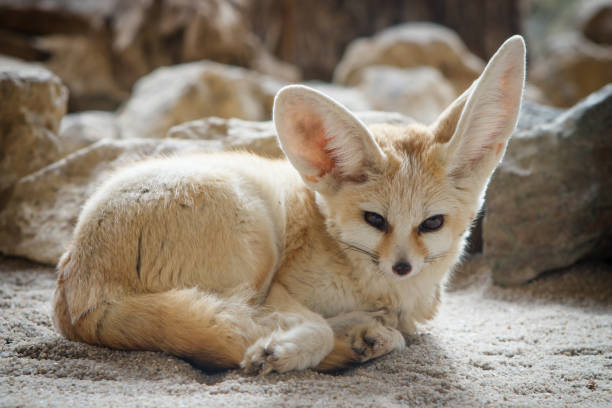
2. Distribution
The Fennec Fox primarily calls North Africa its home, with the Sahara Desert being its main hangout. You can also spot this little creature in arid regions like Mauritania, Egypt, Sudan, Libya, Algeria, Morocco, and Niger. It even makes its home in some remote desert spots in the Sinai Peninsula and parts of the Arabian Peninsula.
This fox prefers to roam in areas that are off the beaten path, often steering clear of human settlements, which is why encounters with it in the wild are quite rare.
3. Habitat
Fennec foxes call dry deserts, semi-deserts, and sandy dunes their home. They really excel in the sweltering heat, with daytime temperatures often soaring above 100°F (38°C). But when night falls, it can get pretty chilly.
These clever little creatures dig extensive burrow systems in the sand dunes, where the temperature remains cool and consistent throughout the day. Their dens can reach several feet underground, stretching up to 32 feet (10 meters) long and featuring multiple entrances.
While fennec foxes inhabit areas with minimal vegetation, they certainly know how to make the best of their sparse environment.
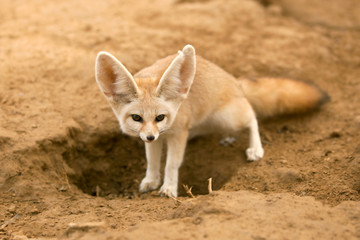
4. Diet
When it comes to their diet, Fennec Foxes are often labeled as carnivores, but the truth is, they enjoy a varied menu. This flexibility is key to thriving in the ever-changing desert environment.
Their meals typically include:
– Insects like grasshoppers, locusts, and beetles
– Small rodents
– Lizards
– Birds and their eggs
– Fruits and berries
– Roots and tubers
One of the coolest things about these little foxes is their ability to go for long stretches without drinking free-standing water. They primarily get their hydration from the food they eat and from dew. Plus, their kidneys are super efficient at conserving water!
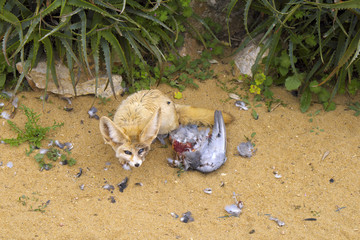
5. Behavior
Fennec foxes are primarily nocturnal creatures, coming to life at dusk to hunt for food and dodge the sweltering desert heat. Their social dynamics are truly captivating. These little foxes are monogamous and tend to form tight-knit family groups, typically consisting of a mated pair and their offspring.
Communication among them is quite diverse, featuring a range of sounds like high-pitched yelps, growls, and barks. They also express themselves through body language and scent marking. Known for their playful energy, you might catch them hopping, running, and engaging in playful scuffles.
Despite their small size, they are quite territorial. Their urine carries scent markers that help define their territory.

6. Lifespan
In the wild, a Fennec Fox typically lives around 7 to 10 years, but they can reach up to 10 years if conditions are right. Their survival is often challenged by predators and environmental factors.
In captivity, where they face fewer threats, these little foxes can live for 14 years or even longer. With proper care, a balanced diet, and plenty of mental stimulation, captive Fennec Foxes can really thrive. They might even develop strong bonds with their human caregivers!
7. Reproduction and Lifecycle
Fennec Foxes are known for forming lifelong monogamous pairs. Once they mate, both partners get involved in raising their young ones together.
After a pregnancy that lasts around 50 to 53 days, the female gives birth to a litter typically consisting of 2 to 5 kits, though sometimes there can be as many as 6 or more. The little ones are born blind, deaf, and completely helpless, depending solely on their mother’s milk for the first month of their lives.
During this time, the male becomes quite protective. He often brings food to the mother and keeps a watchful eye over the den. The kits begin to open their eyes around 10 days old and start nibbling on solid food by 4 to 5 weeks. Weaning usually wraps up by 8 to 10 weeks.
By the time they reach 3 months, the kits are out hunting and exploring, always under the watchful eye of the adults. Young adults hit sexual maturity between 9 and 11 months, and by then, many are ready to venture out and find their own territories.

8. Predators
Even with their unique adaptations, Fennec Foxes encounter dangers from both nature and human activities.
Natural Predators:
– Owls
– Eagles
– Jackals
– Hyenas
– Caracals
Human Threats:
– Trapping for the pet trade
– Hunting for fur
– Habitat loss due to encroachment
These clever little foxes evade their predators thanks to their speed, keen hearing, and intricate burrow systems. When danger approaches, they can sprint away at remarkable speeds and quickly disappear into the sands.
9. Adaptations
- The Fennec Fox is truly a marvel of desert survival. Every aspect of its body and behavior is finely tuned to thrive in harsh conditions:
- Large ears: They not only help radiate body heat but also give the fox an incredible sense of hearing, allowing it to pick up on prey hiding underground.
- Thick fur on the soles: This feature protects its feet from scorching sand and enables it to move silently.
- Creamy fur: It reflects sunlight beautifully and helps the fox blend into its surroundings.
- Efficient kidneys: These are designed to conserve water, allowing the fox to survive with very little hydration.
- Nocturnal habits: By being active at night, the Fennec Fox avoids the intense daytime heat and minimizes water loss.
- Burrowing: This behavior provides a cool escape from the midday sun and helps the fox stay safe from predators.
10. Mating Season
Fennec Foxes usually mate in January and February. This season starts due to changes in temperature and food supply.
Males get more agitated and territorial during this time. They often mark their area and make sounds to scare off rivals and attract mates.
After they court successfully, the pair bonds tightly. They stay together during birthing and raising their young.
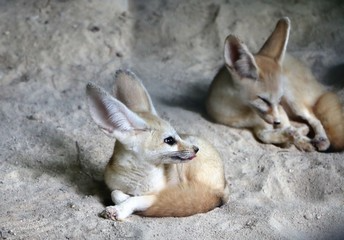
11. Breeding
Breeding Fennec Foxes is all about sticking to a well-planned schedule. This timing is crucial to ensure that the little ones arrive during the milder months, usually around March or April.
Once the female is pregnant, she’ll either pick a cozy spot or build a secure den where she can give birth and take care of her kits. This den quickly turns into a bustling hub, often getting bigger to fit the expanding family.
While she’s nursing, the male takes on the role of the hunter, bringing back food for her. After the kits are weaned, they start learning the ropes of hunting and survival.
If you’re breeding in captivity, it’s essential to plan carefully. You need to create the right environment, which means providing proper lighting, a nutritious diet, and keeping stress levels to a minimum.
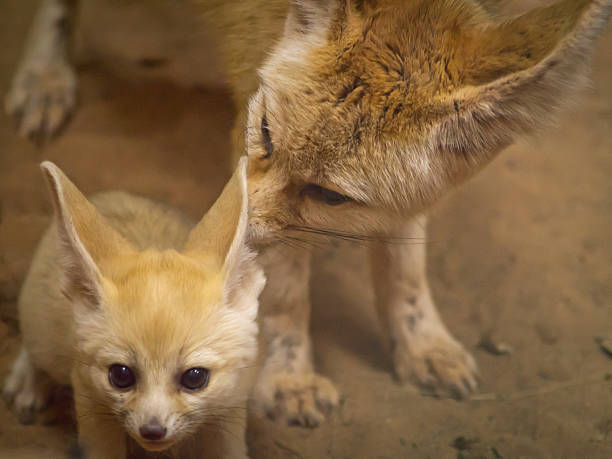
12. Interesting Facts
- Big-eared champion: The Fennec Fox has the largest ears compared to its body size of any canid.
- Incredible hearing: They can detect prey moving underground using sound alone.
- Loyal lovers: Mated pairs often remain bonded for life.
- Communication experts use more than 36 vocal sounds. They also use body language and scent to share messages.
- Jumping skills: They can leap over 3 feet vertically from a standstill.
- Thermoregulation: Their ears help cool their blood—an internal air-conditioning system.
- Digging champs: A family of Fennecs can dig a burrow in just days. They create an underground fortress.
13. Conservation Status
The IUCN has listed the Fennec Fox as Least Concern, but that doesn’t mean they’re completely safe from threats.
Here are some of the challenges they face:
Illegal pet trade: Their adorable size and charm make them prime targets.
Habitat loss: This is largely due to agriculture, urban development, and the impacts of climate change.
Hunting: In certain areas, they’re hunted for their fur or seen as pests.
On a positive note, several countries in North Africa have implemented legal protections for Fennec Foxes. Conservationists are pushing for tougher regulations on the trade and working to raise public awareness.
Zoos and wildlife reserves are also playing a crucial role by running captive breeding programs. These initiatives not only help preserve the genetic diversity of the species but also educate the public about the vital role of desert ecosystems.

Conclusion
The Fennec Fox isn’t just an adorable little creature with oversized ears; it’s a symbol of resilience, adaptability, and the wonders of evolution. Thriving in one of the harshest environments on the planet, it’s a testament to how nature equips its inhabitants to survive and flourish.
Let’s take the time to learn about these fascinating animals, support their conservation, and observe them with respect. By doing so, we can ensure that this enigmatic fox continues to roam the sandy dunes and call out into the night for many generations to come.


